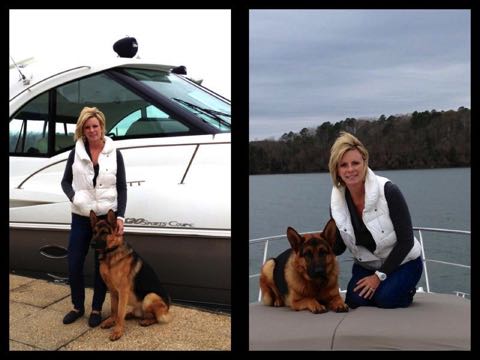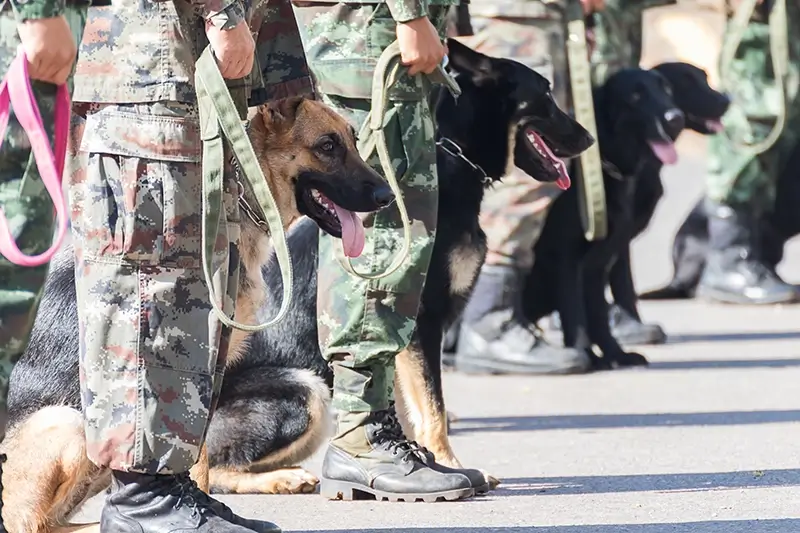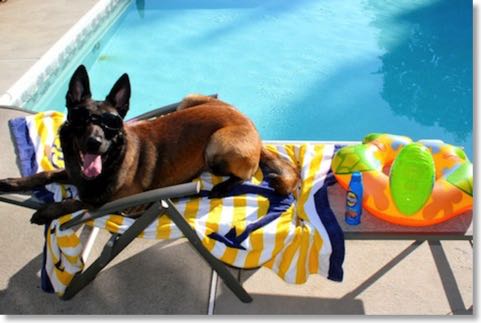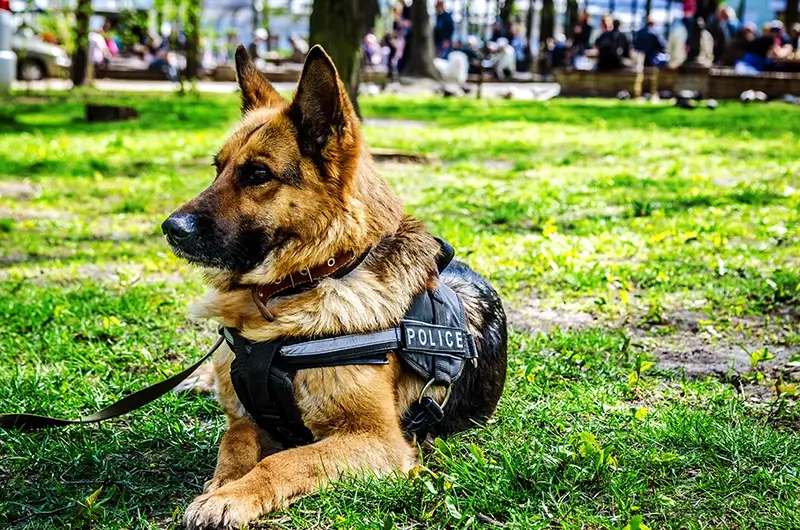Step by Step: Buying One of Our Protection Dogs for Sale
Hicks and Aden during a socialization training session in Brentwood, NH
If our guide to raising a puppy for protection sounds too involved for your lifestyle, you might want to consider purchasing a fully trained Belgian Malinois or German Shepherd dog for protection. With this option, you know you’re getting a dog that has already been thoroughly evaluated and prepared for home defense, eliminating the risk of ending up with a dog not suited for home defense or companionship. From the time our dogs are puppies, they are handled by experienced professionals who know how to nurture their working drives and social nature. Once selected for our program and imported to the U.S.A, the dogs are given the most advanced obedience and protection training possible. The heavy lifting has already been done and the dogs are completely ready to keep your home safe.
You may be wondering if you can bond with an adult dog as well as you could with a puppy, and the answer is yes. Dogs have earned their reputation “man’s best friend” because of how readily they offer their unconditional affection. Even though we are training working dogs to be professional and precise, at the end of the day they are still loving dogs who would like nothing more than to protect and bond with their master. During the delivery process (shown here), our dogs are already forming a deep bond with their new family.
If this approach sounds like the one for you, let this post walk you through the process of selection, customization, purchase and delivery.
The first step is to figure out what qualities you want in a home protection dog. Start by browsing our current selection of protection dogs for sale. We also recommend taking a look at our Recently Sold page. These pages feature a variety of protection dog breeds, sexes, and training levels, but understand that any dog that we list on our website is healthy and fully socialized.
Choosing between protection dog breeds and appearance is simply a matter of personal preference. Click here to read our discussion on Belgian Malinois vs. German Shepherds for protection. The bigger decision is picking the right training level for your needs. An explanation of our training levels can be found here.
Once you have narrowed your search to a few of our protection dogs for sale, it’s time to fill out our short questionnaire. Clients in the U.S.A. should use this form, while we have a separate form for international clients. This form will let us better understand your lifestyle so that we can help you in your decision making process. After the questionnaire is submitted, we will follow up with a phone call within 24 hours. This is a great time to have any lingering questions answered and to learn more about the purchase and delivery process.
Our focus is on selecting, training and delivering the best protection dogs possible. We’re very careful about which dogs we select—we accept fewer than 5% of the dogs we evaluate in Europe. If none of our protection dogs we currently offer for sale seem like a good fit for you, contact us to let us know what you’re looking for. We often have dogs at our facility that have not yet been listed for sale. If none of the dogs in our inventory are just what you want, we’ll take your “wish list” on our next buying trip and bring you back a custom European import.
As soon as you have decided on the dog for you, we’ll begin modifying the dog’s existing training to suit your needs. If you selected a protection dog that was already listed for sale on the website, the training would already be mostly complete and simply needs to be customized to the client’s preferences. The amount of time needed for these finishing touches varies based on what is requested, but generally takes just a few weeks. Training a custom import from start to finish, on the other hand, may take up to 6 months. Once the training is finished, we will make the delivery.
Our protection dog deliveries are coordinated far in advance so that you can allocate time for learning how to handle your dog. The delivery takes just a few days, and by the end of it, you and your family members (or friends, hired help etc.) will have a full working knowledge of the training principles such that you can use and maintain the dog’s training every day.
Ready to get started? Click here to see our fully trained protection dogs for sale.
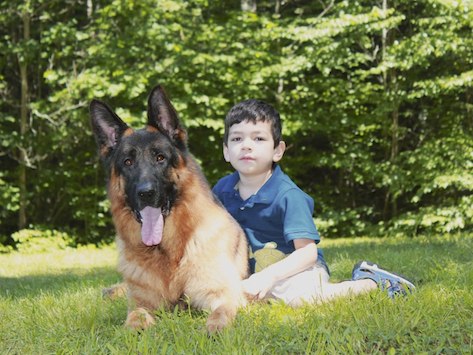
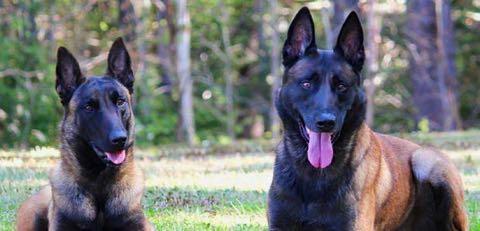

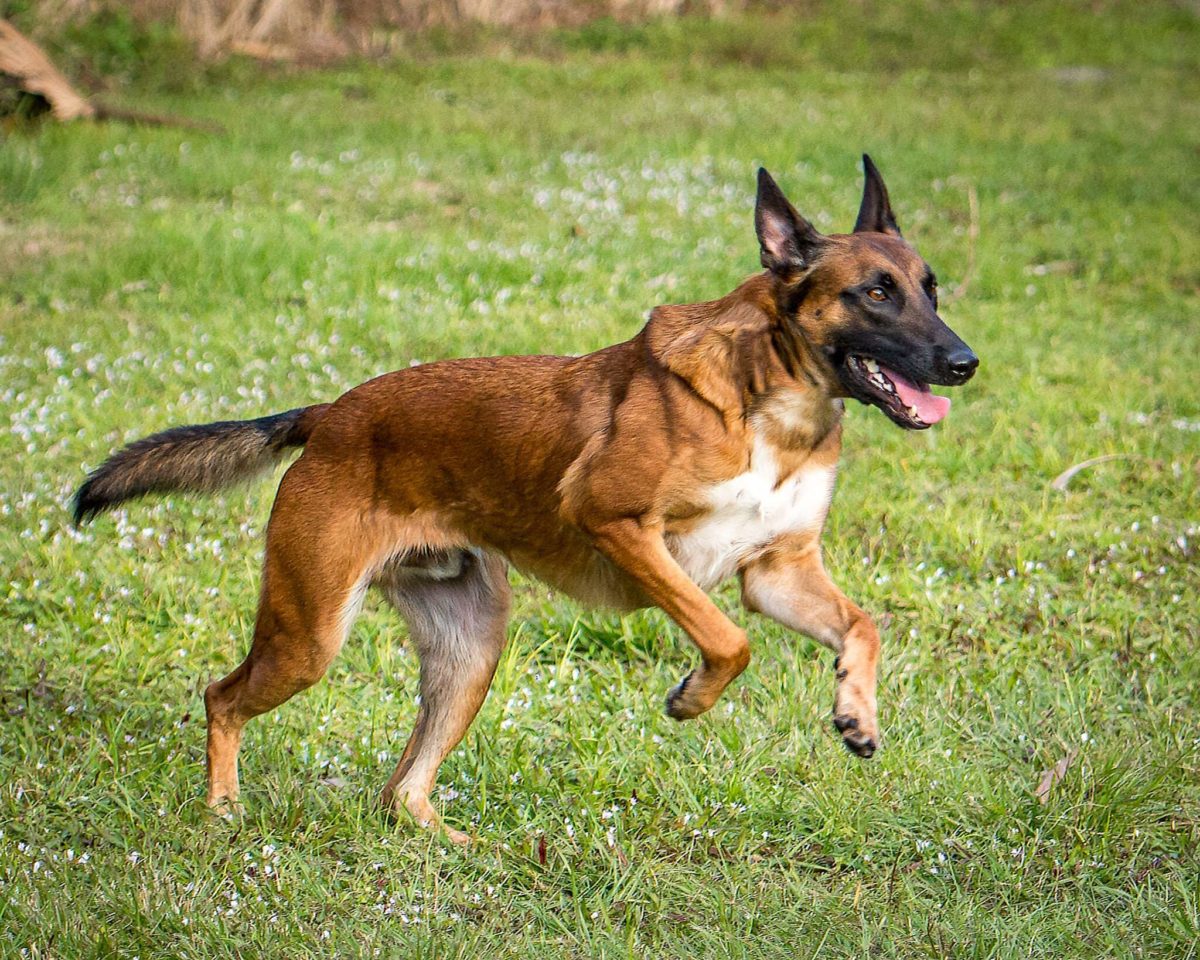
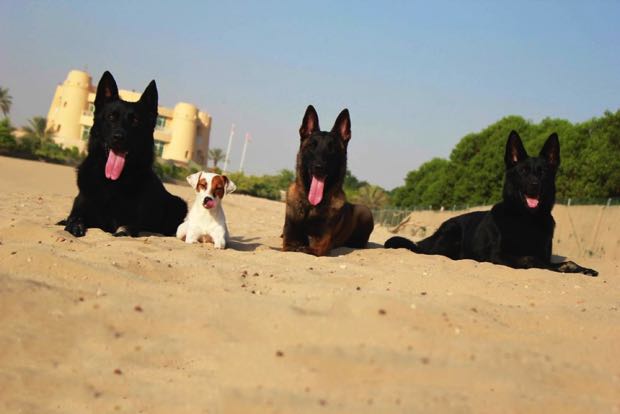
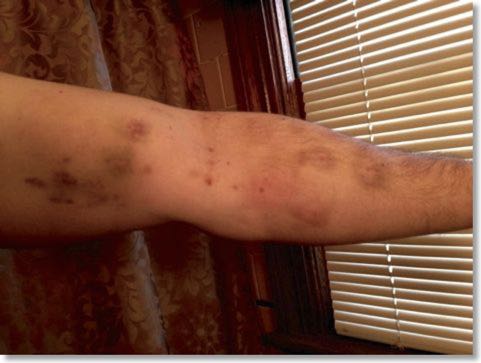
 Update 4/25/2013: Here’s a bruise from last week (left) vs. this week (right). Ouch.
Update 4/25/2013: Here’s a bruise from last week (left) vs. this week (right). Ouch.